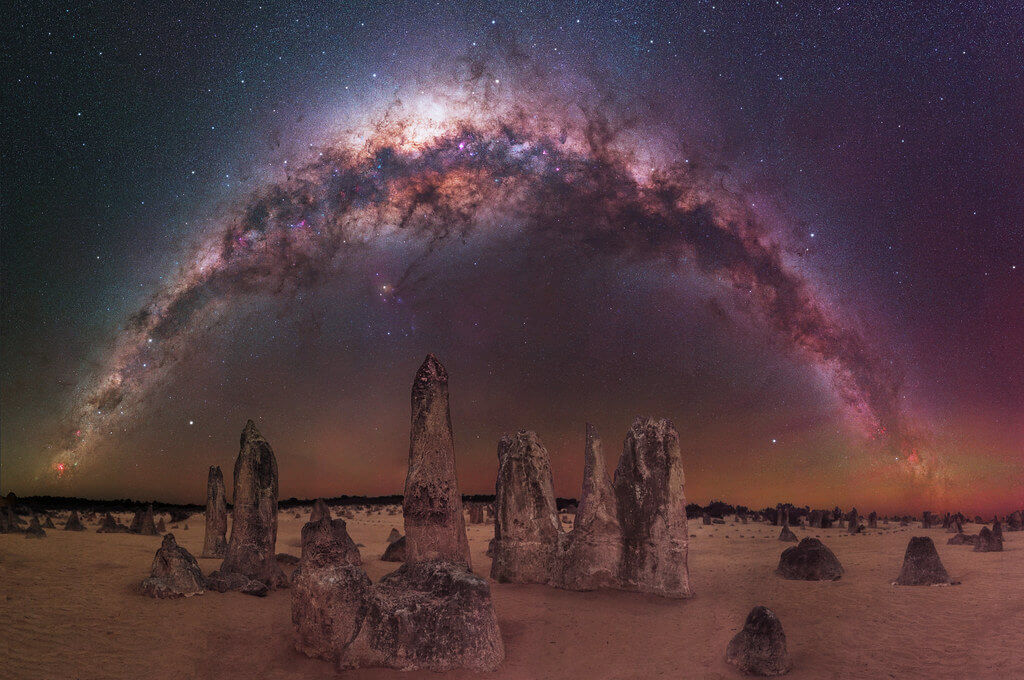The Pinnacles Desert is a massive collection of enormous limestone pillars, some of which tower as high as 5 meters (16 feet). They were constructed between 25,000 and 30,000 years ago in the Nambung National Park. Coastal winds have been removing the surrounding sand for generations, leaving the pillars exposed to the elements. They promise a fresh perspective on our place in a long history and are a humbling and beautiful natural sight.
The Pinnacles Desert Is One Of The Most Beautiful And Impressive Landscapes In Australia
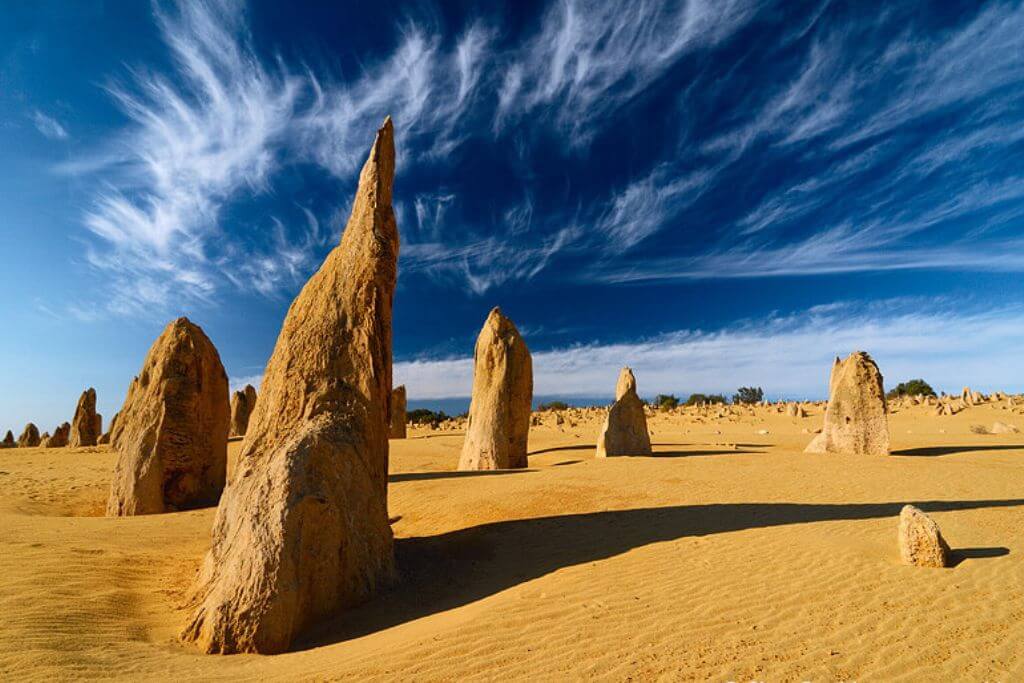
Pinnacles Desert is situated in the Federal Territory of Western Australia’s Nambung National Park, in the park’s center 250 kilometers or so north of Perth. Thousands of limestone pillars that have weathered can be found there. The highest pinnacles rise roughly 3.5 meters above the base of yellow sand. Pinnacles Desert is one of Australia’s most stunning and striking vistas.
The term “pinnacles” refers to a variety of formations, some of which are much taller than they are wide and resemble columns. Others are just a meter or two tall and wide, looking like small tombstones. In numerous pinnacles where the angle of deposited sand abruptly altered due to changes in prevailing winds during the formation of the limestone beds, a cross-bedding structure may be seen.
8 Impressive Facts About The Pinnacles Desert
The Pinnacles Desert has a pretty impressive history
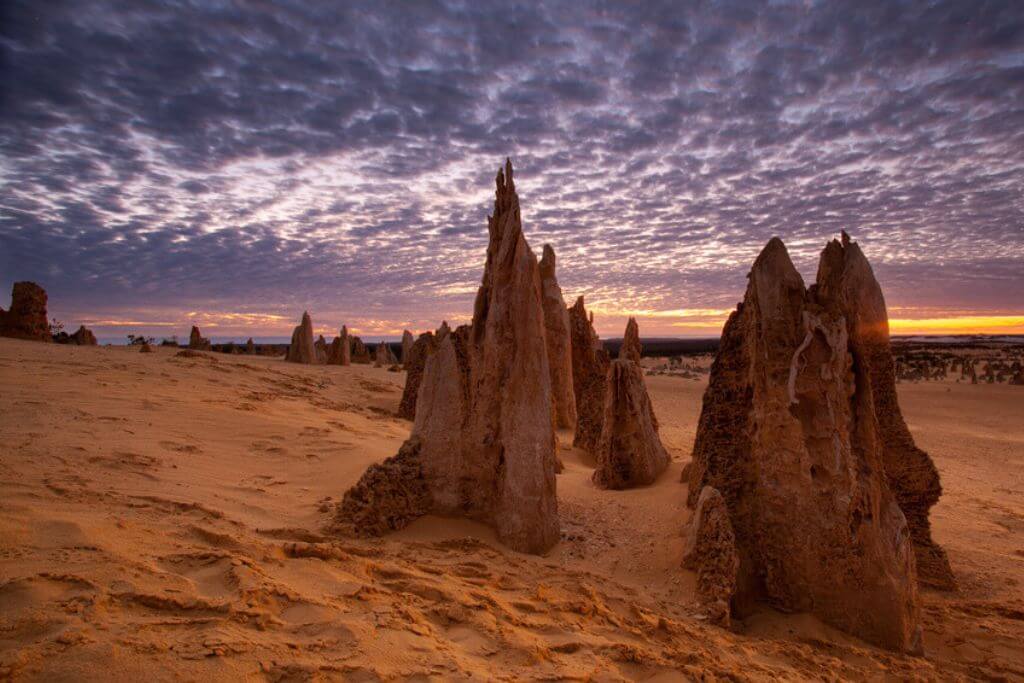
The Pinnacles Desert’s striking topography and unusual stone formations were created millions of years ago. These stone mounds were constructed from seashells that had been broken down into sand rich in lime.
Dunes were later produced as this sand was driven inland by natural forces like the wind. Rainfall gradually forced the lime to seep down into the sand dunes, resulting in the creation of limestone.
The dunes were also shielded from the wind by the numerous plants that grew on top of them. As a result, these dunes weren’t blown again.
This process also made it possible to create an acidic layer of soil on top of the dune. Over the soft limestone beneath the dunes, calcrete, sedimentary rock, or solidified deposits of calcium carbonate formed.
When the vegetation on top of the dunes died due to climatic changes or bushfires, the only thing that was left was the limestone pillars that were exposed. This erosion process persisted for a very long period.
Three different explanations exist concerning how the pinnacles were created
Shells from an earlier time when there was a great deal of marine life served as the starting point for the limestone of the Pinnacles. Due to the breakdown of these shells into lime-rich sands that were blown inland, large mobile dunes were created.
It is still unclear how these basic elements came to construct the Pinnacles, though. However, three main hypotheses have been put forth. They consist of the following:
According to the first theory, they were created as Tamala Limestone dissolving remains. To put it another way, they developed due to prolonged solutional weathering.
According to a second hypothesis, they were created as a result of the preservation of tree casts that were buried in the coastal rocks, where the roots evolved into groundwater conduits. It has been suggested that the pillars were uncovered as a result of wind erosion of the coastal rocks.
Based on the mechanism that created smaller “root casts” in other parts of the world, a third theory contends that plants actively contributed to the formation of the Pinnacles.
In a process known as mass flow, nutrients and other dissolved minerals moved toward the roots as transpiration drew water through the soil to them. If the nutrients arrive in quantities greater than those required for the plant to grow, this can lead to an accumulation of nutrients at the surface of the root.
Kangaroos are widely recognized for living in the Pinnacles Desert
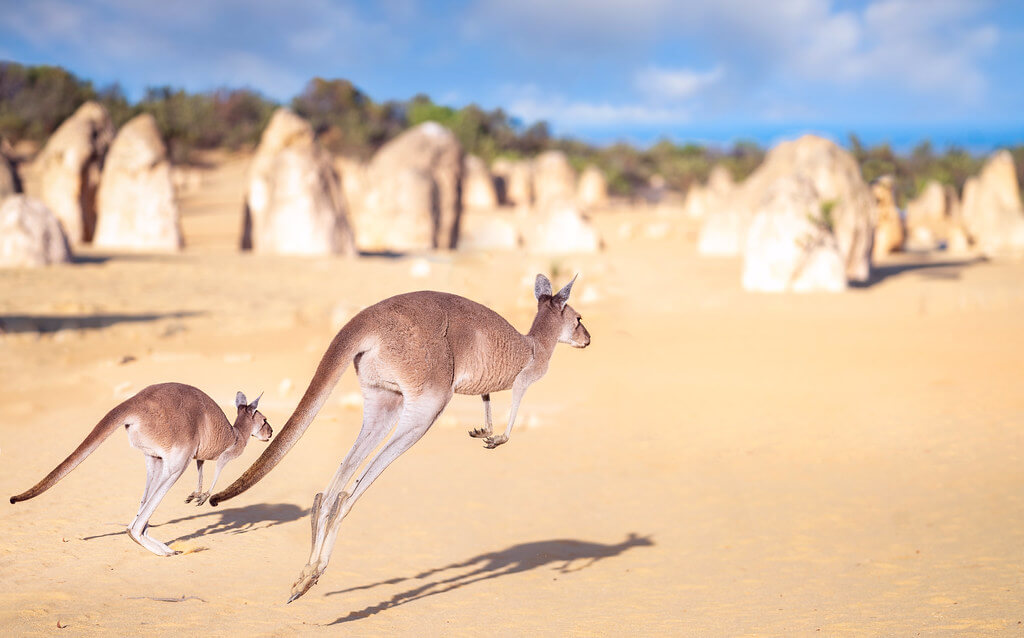
Western grey kangaroos are frequently spotted in the park munching on the grass, especially in the early morning. Kangaroos have so come to be linked with the desert.
The kangaroos are thought to be quite friendly and occasionally even let slow-moving, silent tourists get close to them.
Fun fact: This does not imply that the area is solely inhabited by kangaroos. Emus and Baudin’s black cockatoos can both be seen often in the park. Among the park’s other residents are reptiles, including carpet pythons, sand goannas, and bobtails.
Read more 8 Reasons Why Perth, Australia Is Worth A Trip
At the pinnacles, a diversity of plant species can be discovered
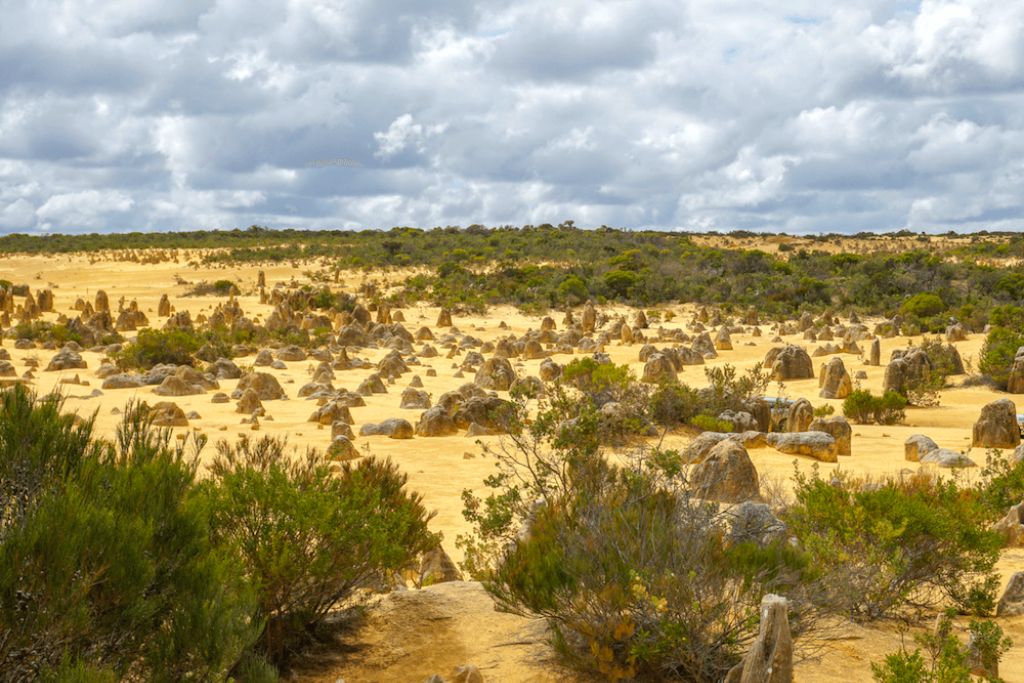
Pinnacle Desert is home to many common plant species, such as quandong, thick-leaved fan flowers, coastal wattles, low-lying wattles like Panjang, and cockies tongues.
In the park, you can also find parrot bushes, candlestick banksia, firewood banksia, and acorn banksia.
In the Pinnacles Desert, Aboriginal artifacts have been discovered
The oldest Aboriginal item remnants discovered in the Pinnacle Desert stretch back 6,000 years. There is, however, no proof of recent native habitation.
As a result, some people think that the pinnacles were first uncovered some 6000 years ago, then hidden by the sands once again until re-exposed in recent times.
Each year, it draws a large number of visitors

The number of tourists to Nambung National Park annually as of 2011 was roughly 150,000. In 2008, the Pinnacles Desert Discovery Center debuted. This aided in providing informative displays of the park, including information on the biodiversity of the region and the natural processes that created the Pinnacles.
Since the days are mild and wildflowers, such as wattle, start to blossom in the spring, the best time to visit the Pinnacles is from August through October.
Nambung National Park doesn’t have any accommodation options or camping grounds, although Cervantes does.
In 1658, it was first explored
Around 1658, Europeans made their first explorations in this region of Western Australia. North and South Hummocks were first featured on Dutch maps at this time.
The explorer Philip Parker King made another reference to this region when he wrote about the Pinnacles Desert in his journal in 1820.
The Pinnacles Desert remained undiscovered by Australians for about 500 years
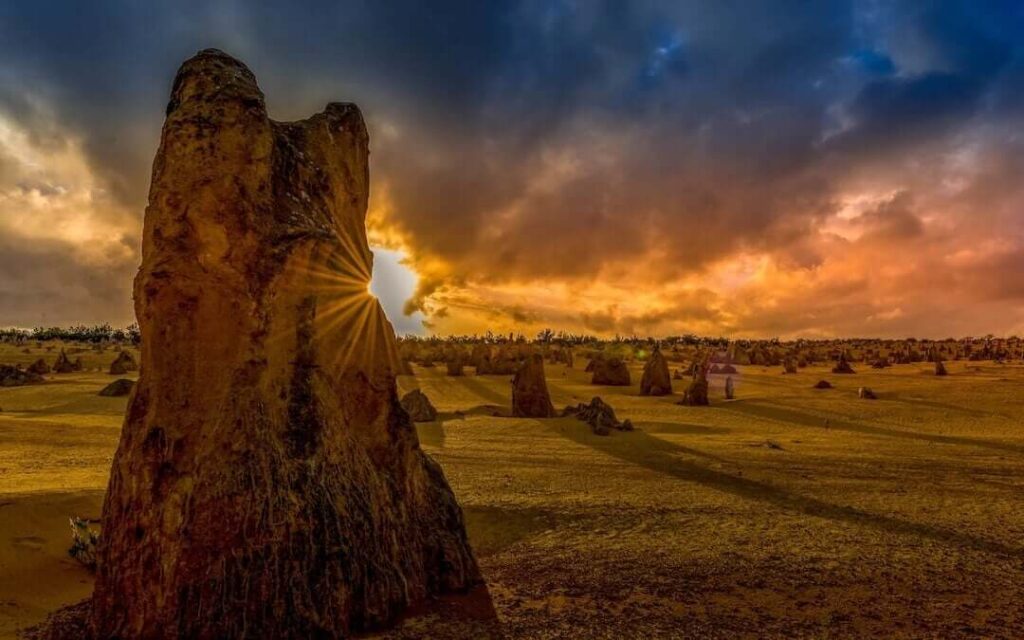
Despite being discovered for the first time in 1658, the Pinnacles Desert was unknown to Australians for over 300 years.
When it was declared a reserve in 1967, interest in it increased. In 1994, the Department of Lands and Surveys combined it with two nearby reserves to create Nambung National Park.
How To Get To The Pinnacles Desert From Perth?
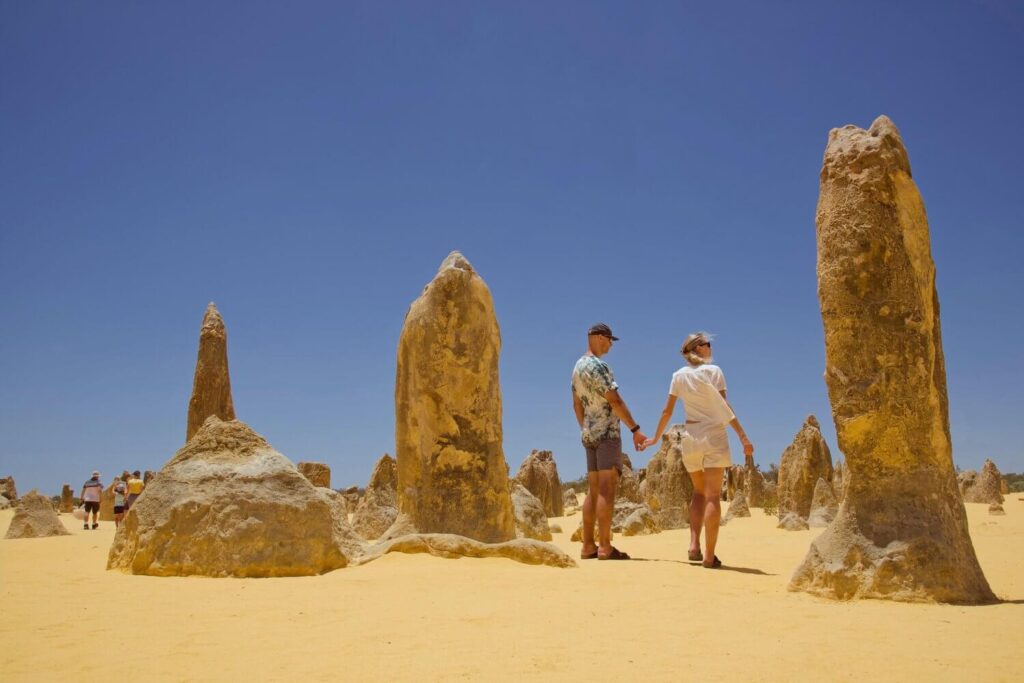
From Perth, take Wanneroo Road north, where it will become Indian Ocean Drive, and turn right at the Pinnacles sign. Alternatively, from Perth, take Brand Highway north and turn left at the Cervantes sign. Then, from Cervantes, go south for two kilometers and turn left at the Pinnacles sign. The journey takes about two hours.
When Can Visit The Pinnacles Desert?
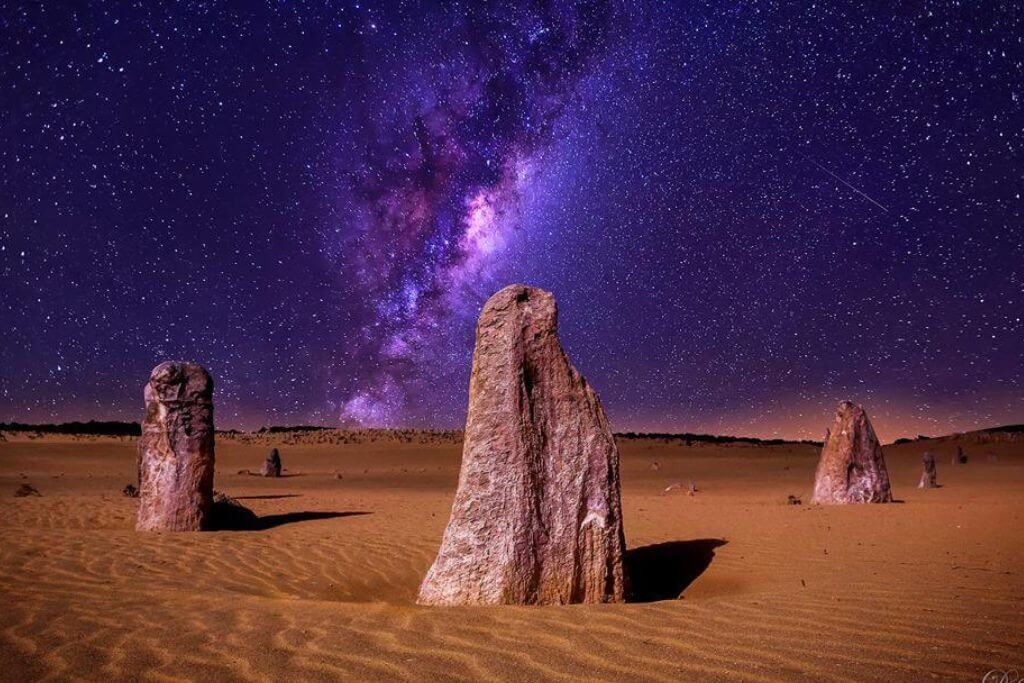
There is no temporal constraint on when one can visit the Pinnacles desert. You can go to the Pinnacles Desert at any time, but it’s crucial to remember that you have to leave the park by 9 o’clock at night.
Additionally, the Milky Way galaxy sprawls above you in the night sky, making The Pinnacles an incredible location to visit after dark.
When visiting, you are free to drive alone and explore. Just remember to take care of yourself by following the trails that have been indicated and carrying a torch. Better still, take a nocturnal excursion to the Pinnacles with tour guides knowledgeable about the area’s routes.
Last but not least, Nambung National Park charges an entrance fee that goes toward park management, environmental protection, and the creation and upkeep of visitor services and amenities. The cost is $15.00 for each private vehicle with up to 12 persons.
Related post 10 Mysterious Australian Places That Will Baffle & Amuse You
